Wildfires and Water Quality: What You Need to Know
Whenever there is a wildfire, water quality is at risk. Learn how you can safeguard your drinking water with the help of Culligan.
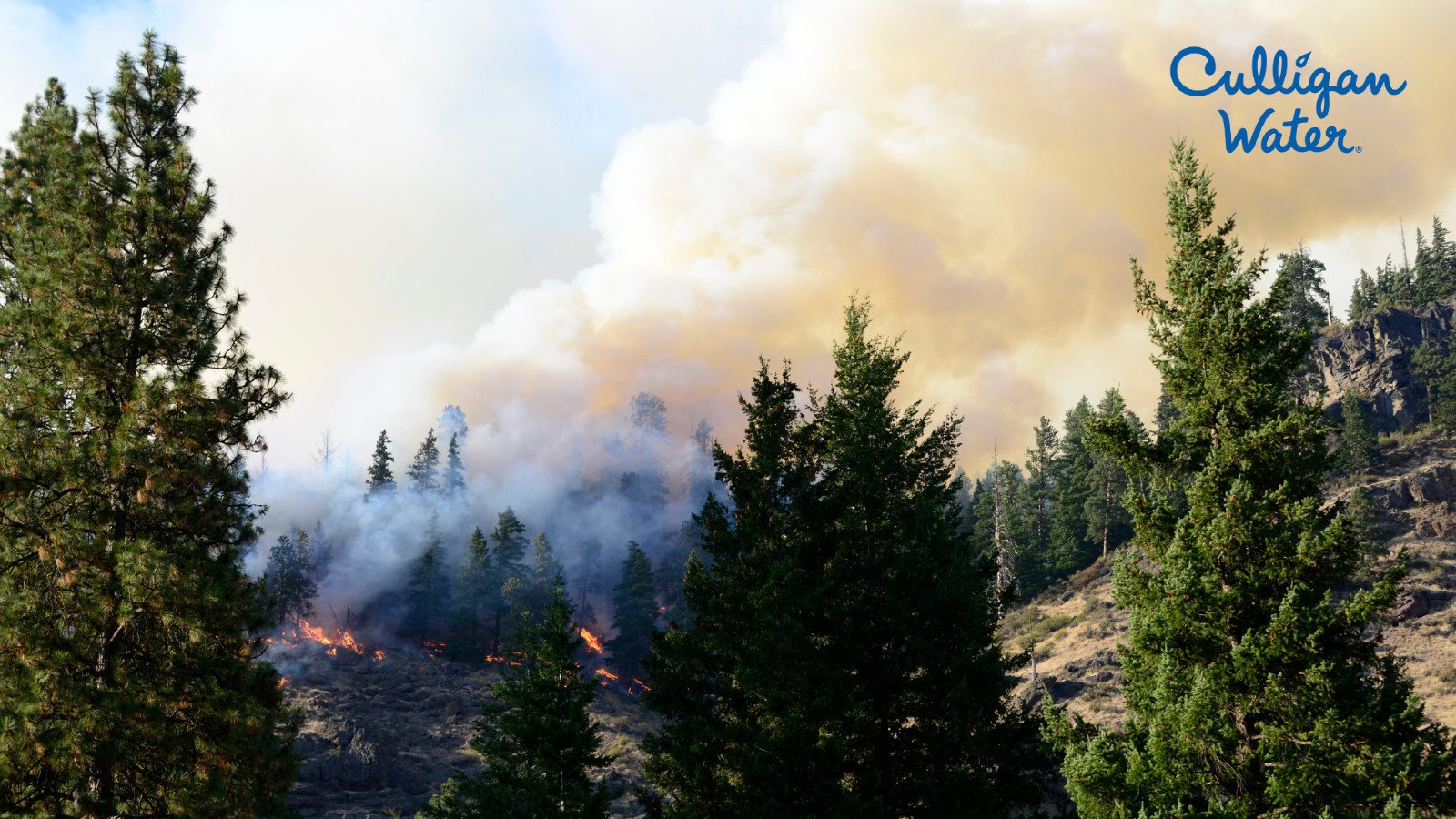
The recent Canadian wildfires may have you wondering, What’s in my drinking water? Find out with a free water test from your local Culligan water expert.
Wildfires are a natural part of many ecosystems. They are nature’s way of cleaning out dead litter on forest floors. This allows important nutrients to return to the soil, enabling a new, healthy beginning for plants and animals.
While wildfires serve a specific purpose, if they burn too long, ecosystems often can’t recover. Not to mention, wildfires have been increasing in size, severity and frequency in many areas of the United States. According to the EPA, the extent of area burned by U.S. wildfires each year has increased since the 1980s.
With more frequent wildfires across the U.S. and around the globe, the threats posed to water quality are becoming more evident.
Continue reading to discover how a wildfire affects water quality. And find out what you can do to protect your drinking water.
Water Quality After a Wildfire
In addition to impacting air quality, wildfires also affect water quality. Factors such as wildfire severity, intensity and duration can all influence our water supply.
Both active burning and containment of the fire can impact our water supply for years. During active burning, ash can settle on lakes and reservoirs used for drinking water supplies. After wildfires, storms can pollute drinking water by carrying ash, dirt and pollutants into rivers, streams and reservoirs.
In addition to the water itself being unsafe, wildfires can also cause damage to drinking water infrastructure. Water treatment and distribution systems, private wells and building plumbing can become physically damaged and chemically contaminated from a wildfire.
Impact on Watersheds
Wildfires also affect watersheds, which are land areas that channel rainfall and snowmelt to creeks, streams and rivers, and eventually outflow to points such as reservoirs, bays and the ocean.
After a wildfire, a watershed is likely to be more susceptible to flooding and erosion, which can have short- and long-term effects on water supplies. Water exported from severely burned watersheds may contain elevated levels of contaminants and other unwanted materials that are difficult to remove.
Culligan Drinking Water Solutions
If you’re concerned about your water quality being affected by a wildfire, one of the best steps you can take is to protect your drinking water at the source.
Reverse Osmosis (RO) Drinking Water Systems
Reverse osmosis can reduce up to 99% of contaminants found in drinking water. This includes larger particles and those that you can’t always see, taste or smell.
Culligan reverse osmosis drinking water systems are customizable, with 12 interchangeable filters. They are certified to reduce up to 60 water contaminants unique to your household.
Whether you want an endless supply of cleaner drinking water or a system with a sleek, compact design that fits seamlessly into your home, Culligan can help find the best system for you.
Below are a couple of the most popular Culligan reverse osmosis drinking water systems.
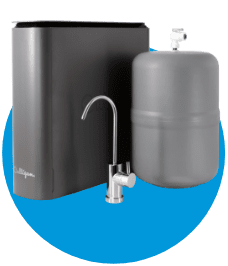
Culligan® Aquasential® Reverse Osmosis Drinking Water System:
- Up to seven stages of filtration with 12 interchangeable filters
- Certified to reduce 60 different contaminants
- Unlimited supply of safer water for just pennies a glass
- Smart option available
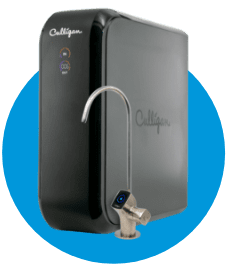
Culligan® Aquasential® Tankless Reverse Osmosis Drinking Water System:
- Elegant, space-saving design
- Four stages of filtration reduces contaminants by 95%
- Unlimited supply of safer water for just pennies a glass
- Smart option available
Bottled Water
If your water supply has been unexpectedly impacted by a wildfire and you’re looking for a short-term solution, Culligan bottled water is a great option.
Culligan bottled water is produced at local bottling plants under strict standards set by the International Bottled Water Association. Culligan water uses reverse osmosis filtration. This process reduces microscopic impurities and contaminants. It is more effective than carbon filter pitchers or faucet filter attachments.
With reverse osmosis, pressure is used to force water through a semipermeable membrane. The membrane allows water molecules to pass through while blocking up to 99% of contaminants.
Culligan Bottled Water Products:
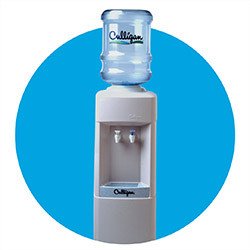
Culligan® Bottled Water Cooler:
- High-quality, filtered drinking water when you need it
- Standalone unit allows you to move the water cooler
- Compact design takes up less than one square foot of space
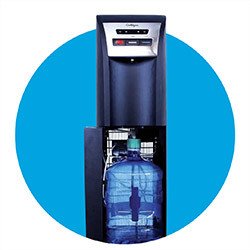
Culligan® Bottom-Load Bottled Water Cooler:
- Bottom-load design eliminates the hassle of lifting heavy 5-gallon bottles
- Provides hot, cold and room temperature water with the push of a button
- Compact design takes up less than one square foot of space
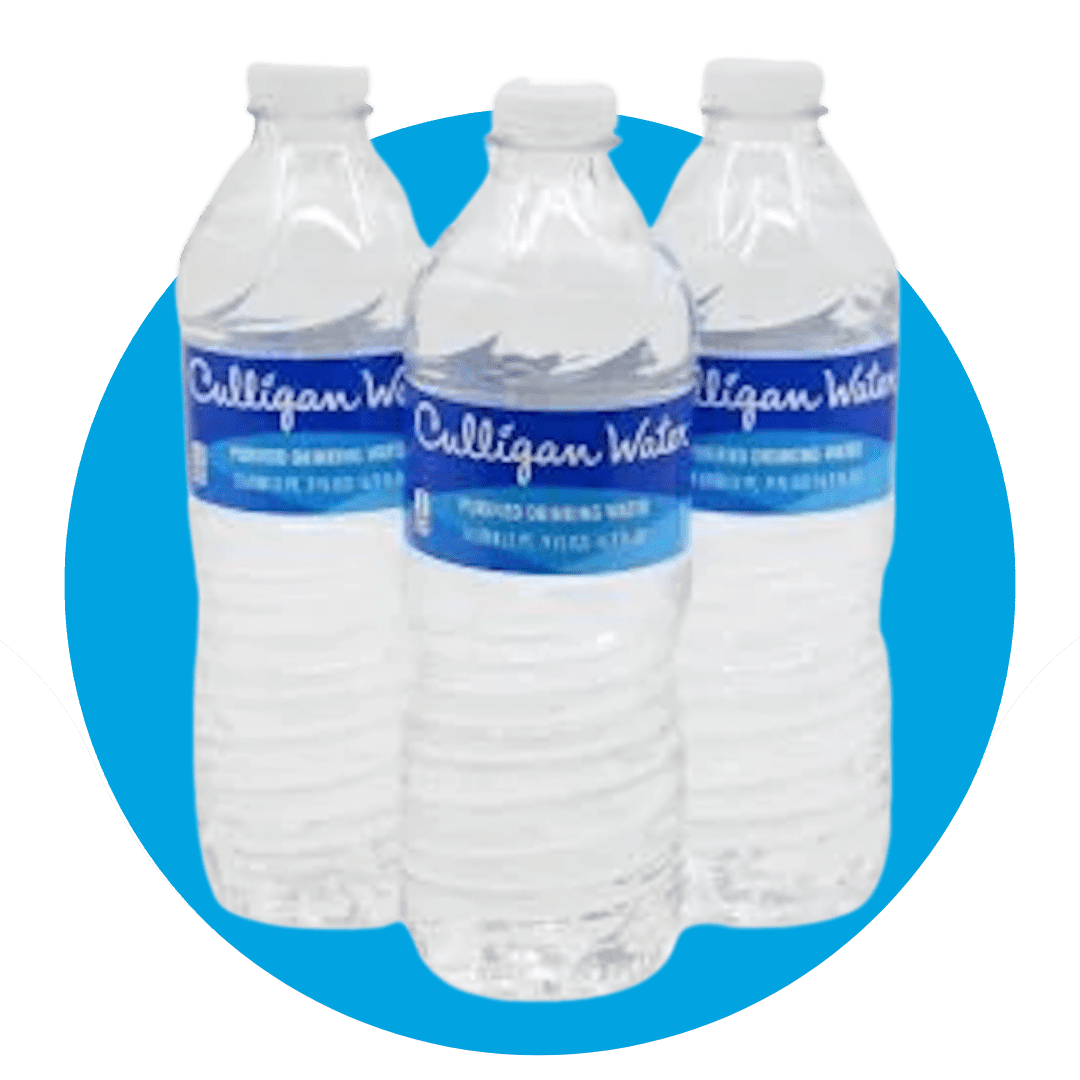
Culligan® Sport Bottles:
- Removes the need to install a cooler or handle heavy, gallon-plus bottles *Only available at participating dealerships
Culligan Bottled Water Delivery:
Culligan delivers, as well, and can tailor the quantity and frequency to meet your specific water needs. Contact your local Culligan water expert for pricing and ordering information.
Contact Your Local Culligan water Expert
No one filters more than Culligan water.
Our water experts can help you understand the different types of water contaminants caused by wildfires and recommend the best treatment solutions. From carbon filtration to reverse osmosis, Culligan offers a range of products and services designed to remove even the toughest contaminants to provide cleaner, safer, and refreshing drinking water.
To learn more about the quality of your drinking water, connect with your local Culligan water expert.
Schedule your advanced water test or your free basic water test today!
*Contaminants may not be in your water.
